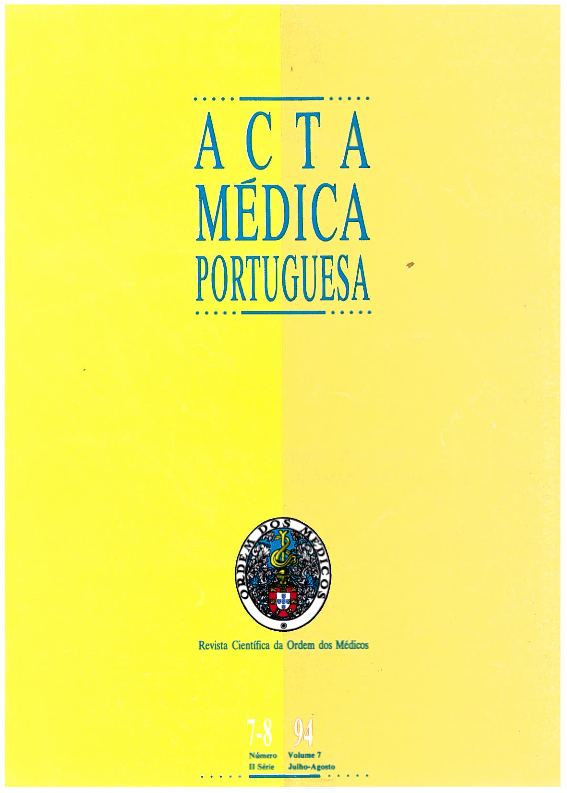Fístulas carótido-cavernosas. Perspectivas de diagnóstico e terapêutica.
DOI:
https://doi.org/10.20344/amp.2940Resumo
Even though in clinical practice carotid cavernous fistulas (CCF) are not a frequent pathology, it should be a diagnostic hypothesis in face of a suggestive clinical presentation. We intended to review the diagnosis and the therapeutics, comparing them with the actual perspectives. Files of 25 patients with the diagnostic hypothesis of CCF, confirmed by conventional angiography in the HSAC Neuroradiology Department, were reviewed. In this group of patients, (5 males and 20 females), the fistulous aetiology was spontaneous in 10 and traumatic in 15. Clinically the symptom most often presented was diplopia (23 cases) and the most frequent encountered sign was ophthalmoplegia (20 cases). Of the Neuroradiologic investigation, CT scan (done to all patients) have shown an prominent superior ophthalmic vein as the most frequent abnormality. Angiographic study was based on Lasjaunias et al protocol (Surgical Neuroangiography, Vol. 2, Springer-Verlag). Surgery was the therapeutic approach for the traumatic fistulas; only 2 of the spontaneous were treated by endovascular route. Three patients are still under observation. In all the others cases there was a fistula exclusion.Downloads
Downloads
Como Citar
Edição
Secção
Licença
Todos os artigos publicados na AMP são de acesso aberto e cumprem os requisitos das agências de financiamento ou instituições académicas. Relativamente à utilização por terceiros a AMP rege-se pelos termos da licença Creative Commons ‘Atribuição – Uso Não-Comercial – (CC-BY-NC)’.
É da responsabilidade do autor obter permissão para reproduzir figuras, tabelas, etc., de outras publicações. Após a aceitação de um artigo, os autores serão convidados a preencher uma “Declaração de Responsabilidade Autoral e Partilha de Direitos de Autor “(http://www.actamedicaportuguesa.com/info/AMP-NormasPublicacao.pdf) e a “Declaração de Potenciais Conflitos de Interesse” (http://www.icmje.org/conflicts-of-interest) do ICMJE. Será enviado um e-mail ao autor correspondente, confirmando a receção do manuscrito.
Após a publicação, os autores ficam autorizados a disponibilizar os seus artigos em repositórios das suas instituições de origem, desde que mencionem sempre onde foram publicados e de acordo com a licença Creative Commons









